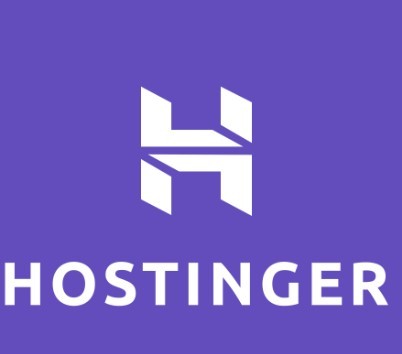Introduction
One of the first steps in creating a successful website is choosing the best web hosting package. A dependable hosting plan guarantees that your website loads rapidly, stays safe, and can be expanded as your traffic increases. While a bad decision can lead to frequent outages, security flaws, and a bad user experience, the correct plan enhances the functionality of your website. Understanding the differences between shared, VPS, cloud, and dedicated hosting is crucial in order to match your selection to the objectives and requirements of your website.
Whether your website is a high-traffic business site, an eCommerce store, or a personal blog, we’ll take you through eight crucial steps in this article to help you select the ideal hosting plan. Every stage will assist you in making an informed choice, from determining the needs of your website to comprehending important aspects like uptime, performance, and security. By the end, you’ll know more about how to choose a hosting plan that can help you achieve long-term online success while also meeting your present needs.
Step 1: Define Your Website’s Needs
Before choosing a hosting plan, it’s essential to understand what type of website you’re creating. Consider the following questions:
- Is it a blog, eCommerce site, portfolio, or corporate website?
- Will you have high traffic volumes?
- Do you need extensive storage for multimedia content?
Every kind of website has unique needs, and being aware of them up front makes it easier to choose a hosting plan that can meet your site’s requirements.
Pro Tip:
Prioritize a hosting plan with robust security features and scalability if you’re managing an eCommerce website. Choose plans with reasonable storage and dependable uptime for blogs.

Step 2: Understand the Different Types of Hosting
The performance, security, and scalability of your website all depend on the hosting plan you choose. The primary hosting kinds are broken down here, each of which serves a different set of requirements and skill levels.
1. Shared Web Hosting
For novices and tiny websites, shared hosting is frequently the preferred option. In this configuration, the CPU, memory, and storage of a single server are shared by several websites. Because of its shared infrastructure, hosting companies are able to offer it at reasonable costs, making it a cost-effective choice for portfolio websites, small businesses, and personal blogs.
Pros:
affordable and easy for beginners to use
No technical knowledge is necessary.
One-click installations for well-known platforms like WordPress are included in many plans.
Cons:
Insufficient resources may cause delays during periods of high demand.
Other websites on the internet may have an impact on performance.
Best for: Small websites with low-to-moderate traffic, like blogs or personal sites.
2. VPS (Virtual Private Server) Hosting
A compromise between dedicated and shared hosting is offered by VPS hosting. Each site has its own virtual space with dedicated resources, but you still share a physical server with other sites. This configuration is perfect for websites with moderate to high traffic since it provides better performance, control, and security than shared hosting.
Pros:
- Dedicated resources for better performance
- Greater control and customization options
- More secure than shared hosting
Cons:
- More expensive than shared hosting
- Requires basic technical knowledge to manage
Best for: Growing websites, online stores, or businesses needing higher reliability and security.
3. Dedicated Hosting
With dedicated hosting, you get a whole server that is only used for your website, giving you the best possible control, speed, and security. Because dedicated hosting eliminates resource sharing, you can manage high traffic volumes and set up the server to suit your demands.
Pros:
- Complete control over the server
- Excellent performance and speed
- High security and customizable settings
Cons:
- Expensive, making it more suitable for large businesses
- Requires advanced technical expertise
Best for: High-traffic websites, eCommerce sites, or large businesses requiring extensive customization.

4. Cloud Hosting
Instead of depending on a single server, cloud hosting spreads your website over several. Increased scalability, flexibility, and dependability are made possible by this setup. Because cloud hosting allows resources to be scaled up or down as needed, your website can instantly adapt to rising demand.
Pros:
- High scalability and flexibility
- Reliable, as issues with one server won’t affect your site
- Pay-as-you-go pricing based on resources used
Cons:
- Costs can vary, especially with high usage
- Limited control over the server environment
Best for: Sites with unpredictable traffic or businesses needing flexible scalability.
5. Managed Hosting
With managed hosting, all server management, upkeep, and updates are handled by the hosting company, making it a hands-off choice. This comes in a variety of forms, such as VPS and dedicated hosting, and is particularly well-liked by WordPress hosting companies.
Pros:
- Hands-off server management
- Enhanced security, support, and maintenance
- Ideal for users without technical expertise
Cons:
- Typically more expensive than unmanaged plans
- Limited control over specific server settings
Best for: Users looking for convenience, especially those using platforms like WordPress.
Your website’s requirements, financial constraints, and technological know-how will determine the best hosting package for you. Shared hosting is a good place to start for tiny websites. VPS or cloud hosting are better options for scalability and control, but dedicated hosting is best suited for large-scale, high-traffic operations.
Step 3: Evaluate the Server Uptime and Reliability
The term “server uptime” describes how long a server remains online and completely functional. To assure less downtime and continuous service, look for hosts that offer at least 99.9% uptime. Because search engines favor websites that are consistently available, downtime has an impact on both user experience and SEO rankings.
A lot of web hosting companies promise uptime, but be sure they live up to the hype by reading independent evaluations.
Step 4: Assess Performance and Loading Speed
A website that loads slowly can alienate users and hurt your SEO. Choosing a host with quick server response times is crucial because Google and other search engines utilize page speed as a ranking factor. What to look for is as follows:
- SSD (Solid State Drives): Faster than traditional hard drives, SSDs help your site load quicker.
- CDN (Content Delivery Network): A CDN distributes your content across multiple servers, reducing loading time for users far from your server’s location.
- Server Location: Choose a server location close to your target audience for quicker load times.
Pro Tip:
Use tools like Google PageSpeed Insights to test potential hosting providers’ performance metrics before deciding.
Step 5: Prioritize Security Features
Security is crucial, especially for sites handling personal information or payments. Here are essential security features to look for in a web hosting plan:
- SSL Certificates: An SSL certificate encrypts data, making it secure for online transactions. Most hosting providers include a free SSL certificate, but double-check.
- DDoS Protection: This protects your site from attacks that aim to overwhelm it with traffic.
- Malware Scanning and Removal: Some hosts provide automated scans and removal of malware, which is vital for maintaining a secure site.
- Backups: Regular backups protect your data and help restore your site in case of a breach.
A hosting provider with comprehensive security measures can give you peace of mind and protect your reputation.

Step 6: Consider Scalability for Future Growth
If you intend to expand your website over time, scalability is crucial. Select a server that has customizable plans so you can quickly expand your website as it expands. Compared to shared hosting, VPS and cloud hosting services are typically more scalable. Take into account these elements:
- Flexible Storage Options: Ensure that your hosting provider allows for increased storage without requiring a full server migration.
- Upgradable Plans: Check if the provider offers an easy transition to a more robust plan.
Pro Tip:
If you expect rapid growth, start with a scalable option like cloud or VPS hosting to avoid disruptions.
Step 7: Evaluate the Quality of Customer Support
Since technical problems can occur at any time, prompt customer service is essential. Choose hosting companies that offer round-the-clock assistance via a variety of channels; email, phone, and live chat are typical. When it comes to site migrations, technological problems, and security issues, the support staff should be informed and able to assist you.
Read client testimonials regarding the level of help they provide before making a decision. Support from companies like SiteGround, Bluehost, and A2 Hosting is renowned for being dependable.
Step 8: Compare Pricing and Features
While cost shouldn’t be the only factor in your decision, it’s essential to choose a plan that offers value for money. Here’s what to consider when comparing plans:
- Initial Pricing vs. Renewal Rates: Many providers offer discounts for the first term, but renewal rates may be higher.
- Included Features: Some hosts include free SSL, backups, and email hosting, while others charge extra.
- Refund Policy: Check the provider’s refund policy in case you’re dissatisfied after signing up.
Avoid overly cheap plans that could compromise performance and security. Instead, seek a balance between affordability and quality.
Ending Thoughts
Achieving long-term online success requires selecting the appropriate web hosting plan. You may make an informed choice that supports your objectives by taking these eight steps: comprehending the needs of your website, comparing hosting options, assessing performance, and taking scalability, security, and customer support into account. The speed, dependability, and user experience of your website will all be improved with the correct hosting plan; these factors are critical for drawing in and keeping visitors as well as raising your site’s search engine rankings.
Keep in mind that the ideal website hosting plan is one that may expand with your company while still satisfying your present requirements. Consider each factor carefully, and if investing in high-quality hosting would improve user experience and provide you more peace of mind, don’t be afraid to do so. Your website will be ready to prosper in the always changing digital landscape if you have a strong foundation in place.
Call to Action
Are you ready to confidently launch your website? First, pick a hosting plan that suits your requirements. These procedures will assist you in creating a strong foundation for your website, regardless of your level of experience as a webmaster. Good luck!


Click on the code below or the Hostinger image to enjoy 20% off when you purchase a plan with Hostinger.
Referral Code: 1LAINE09
If you need assistance, send a message to talktounwrapped@gmail.com.










